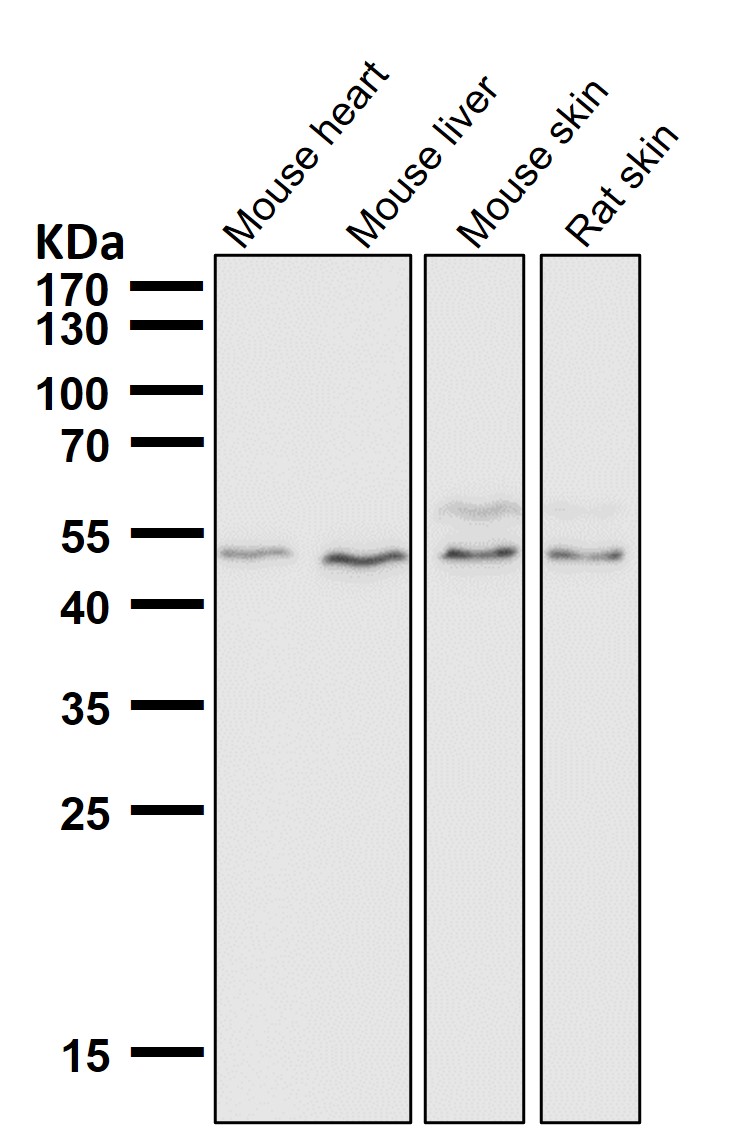
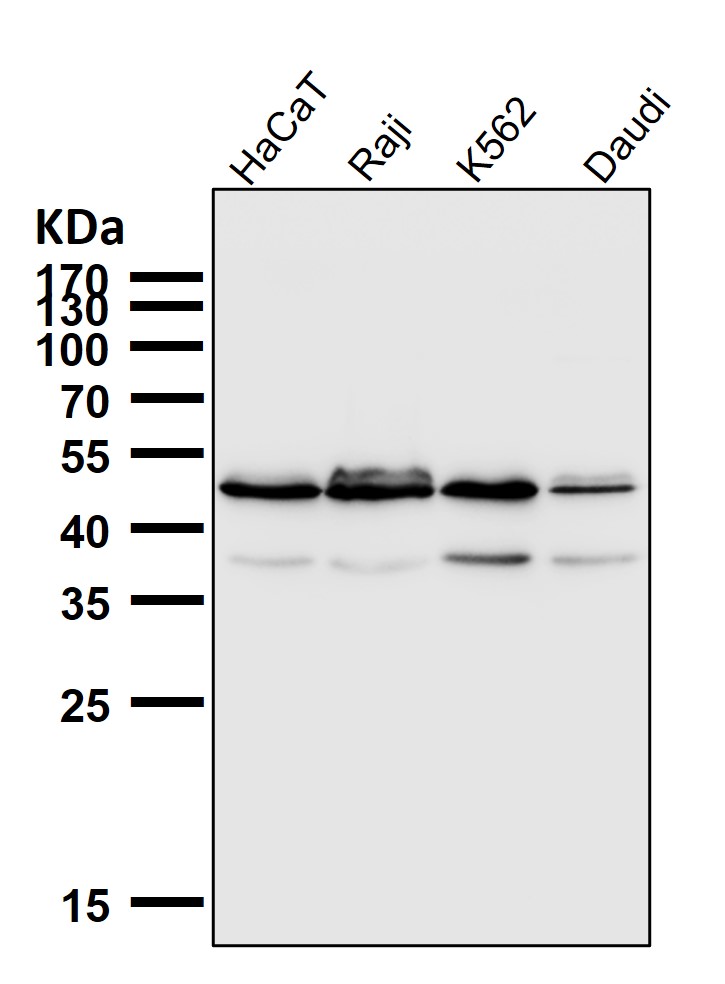
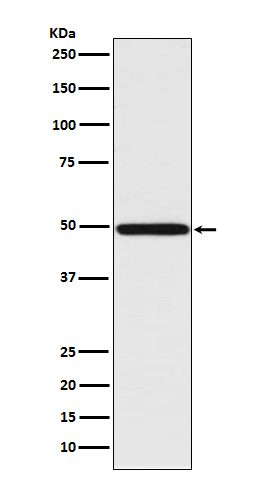
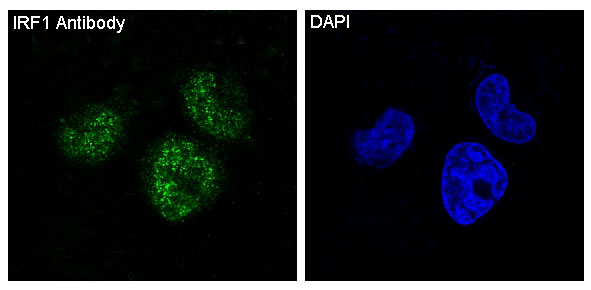
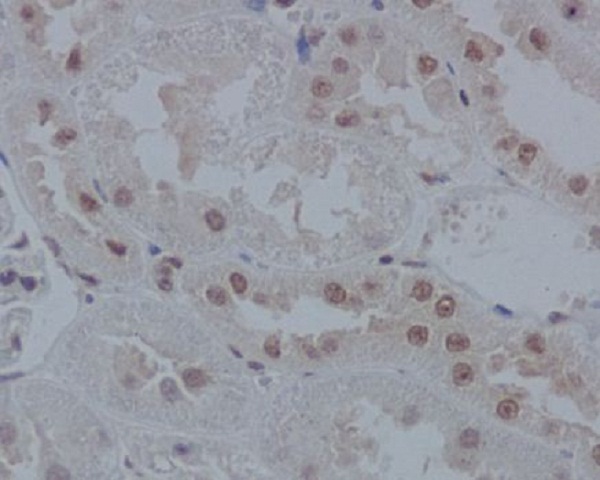
| WB | 咨询技术 | Human,Mouse,Rat |
| IF | 1/20-1/50 | Human,Mouse,Rat |
| IHC | IHC:1/100-1/200;IHF:1/50-1/200 | Human,Mouse,Rat |
| ICC | 1/50-1/200 | Human,Mouse,Rat |
| FCM | 1/20-1/100 | Human,Mouse,Rat |
| Elisa | 咨询技术 | Human,Mouse,Rat |
| Aliases | Interferon regulatory factor 1; IRF1; MAR;;IRF1 |
| WB Predicted band size | Calculated MW: 37 kDa ; Observed MW: 48 kDa |
| Host/Isotype | Rabbit IgG |
| Antibody Type | Primary antibody |
| Storage | Store at 4°C short term. Aliquot and store at -20°C long term. Avoid freeze/thaw cycles. |
| Species Reactivity | Human,Mouse,Rat |
| Immunogen | A synthesized peptide derived from human IRF1 |
| Formulation | Purified antibody in PBS with 0.05% sodium azide,0.05% BSA and 50% glycerol. |
+ +
以下是关于IRF1抗体的3-4篇参考文献示例(内容基于公开文献概括,仅供参考):
1. **"IRF1 is a transcriptional regulator of human PD-L1"**
- **作者**: Garcia-Diaz, A., et al.
- **摘要**: 研究利用IRF1抗体通过ChIP-seq和Western blot验证IRF1在肿瘤细胞中直接调控PD-L1表达,揭示其在免疫逃逸中的作用。
2. **"Interferon regulatory factor 1 (IRF1) mediates the transcriptional activation of the IFN-γ response"**
- **作者**: Tamura, T., et al.
- **摘要**: 通过IRF1抗体阻断实验,证明IRF1在干扰素-γ信号通路中的核心作用,调控下游免疫相关基因表达。
3. **"IRF1 governs the tumor microenvironment to suppress metastasis"**
- **作者**: Yan, J., et al.
- **摘要**: 研究使用IRF1抗体进行免疫组化分析,发现IRF1通过抑制肿瘤微环境中的免疫抑制细胞活性,抑制癌症转移。
4. **"Virus infection induces the assembly of coordinately activated transcription factors"**
- **作者**: Matsuyama, T., et al.
- **摘要**: 通过IRF1抗体的免疫沉淀实验,揭示病毒感染后IRF1与其他转录因子协同激活抗病毒基因的分子机制。
(注:以上为示例,实际引用请核对文献原文并补充完整信息,如期刊、年份、卷号等。)
Interferon Regulatory Factor 1 (IRF1) is a transcription factor belonging to the IRF family, which plays a pivotal role in regulating immune responses, cell growth, and apoptosis. Discovered in the late 1980s, IRF1 is activated by interferons (IFNs) and viral infections, driving the expression of IFN-stimulated genes (ISGs) to combat pathogens. It also interacts with signaling pathways like p53 and NF-κB, influencing tumor suppression, inflammation, and antiviral defense. Dysregulation of IRF1 is linked to cancer, autoimmune disorders, and chronic infections.
IRF1 antibodies are essential tools for studying its expression, localization, and function. These antibodies enable detection of IRF1 in techniques such as Western blotting, immunohistochemistry (IHC), and chromatin immunoprecipitation (ChIP). Researchers use them to explore IRF1’s dual role in promoting or suppressing tumors, depending on cellular context, and its involvement in autoimmune diseases like lupus. Commercial IRF1 antibodies are typically raised against specific epitopes (e.g., human IRF1 amino acids 1-100) and validated for specificity across species. Recent studies highlight IRF1’s potential as a biomarker for immunotherapy response, emphasizing the antibody’s diagnostic and therapeutic relevance. However, variability in antibody performance necessitates careful validation to ensure reproducibility in experimental models.
×